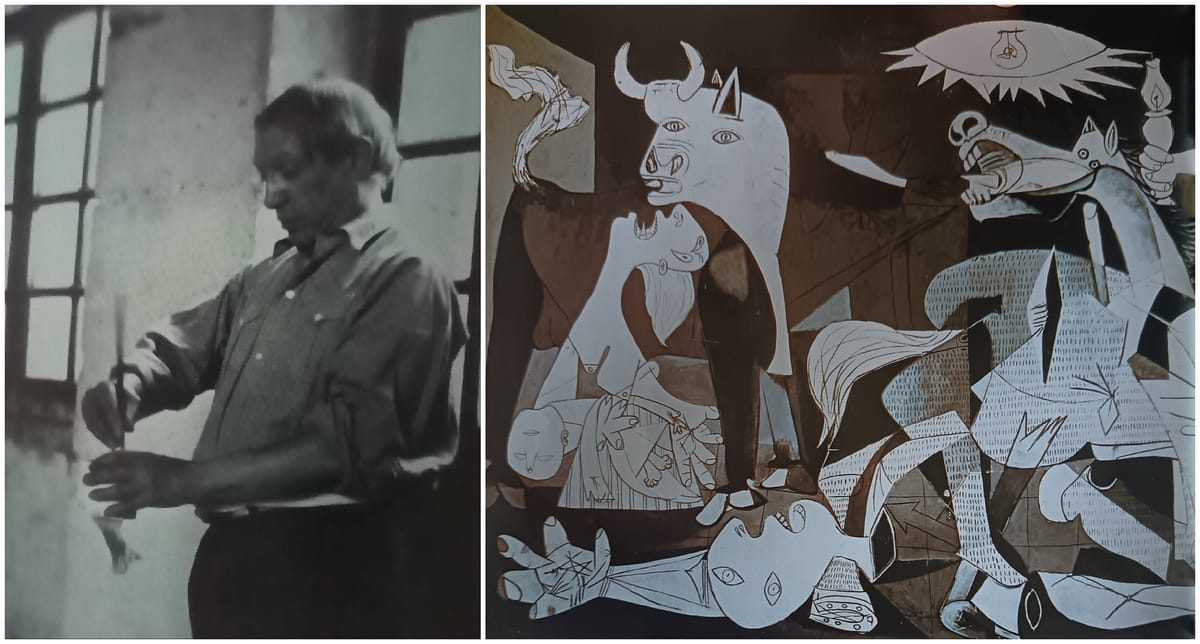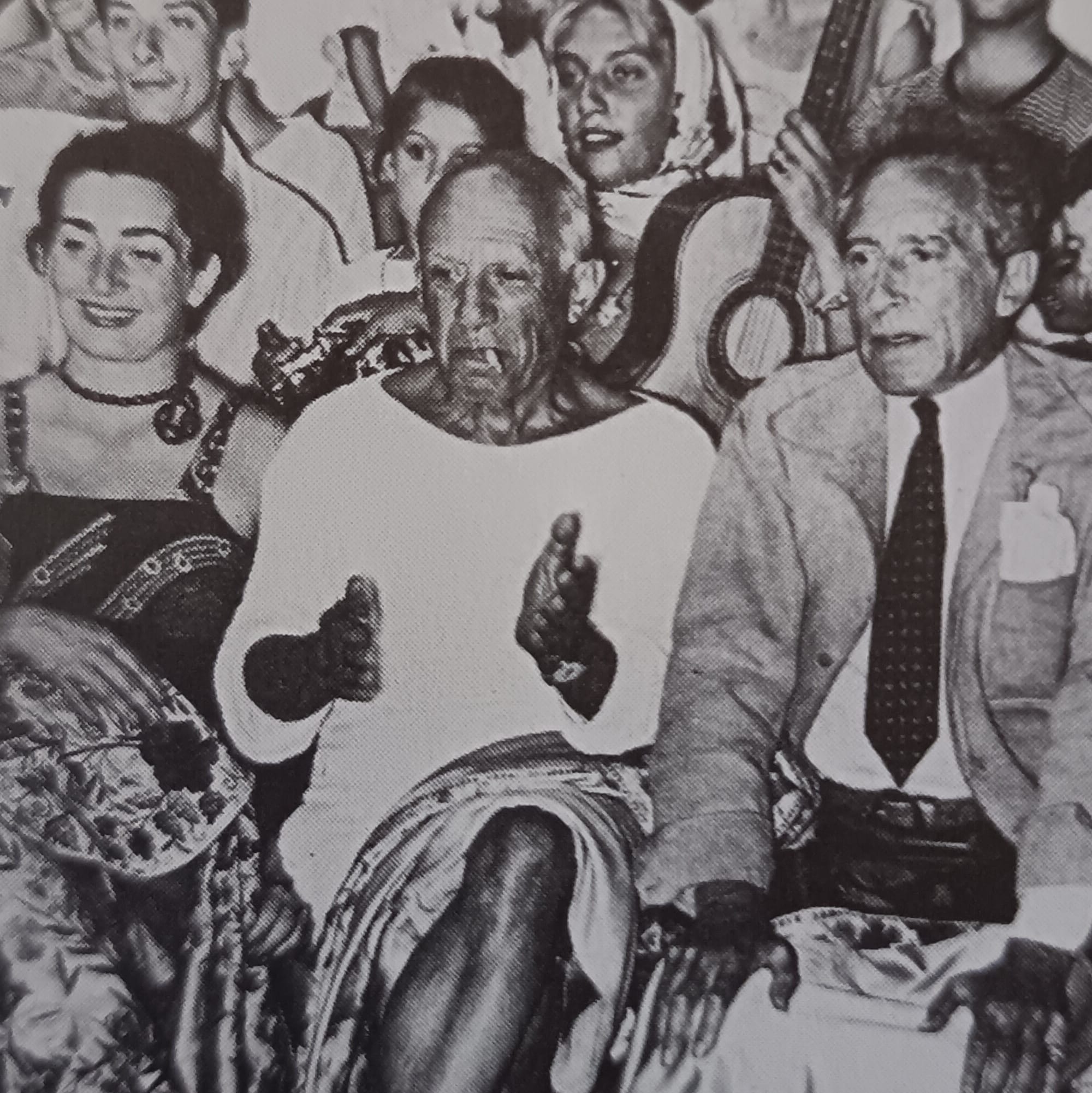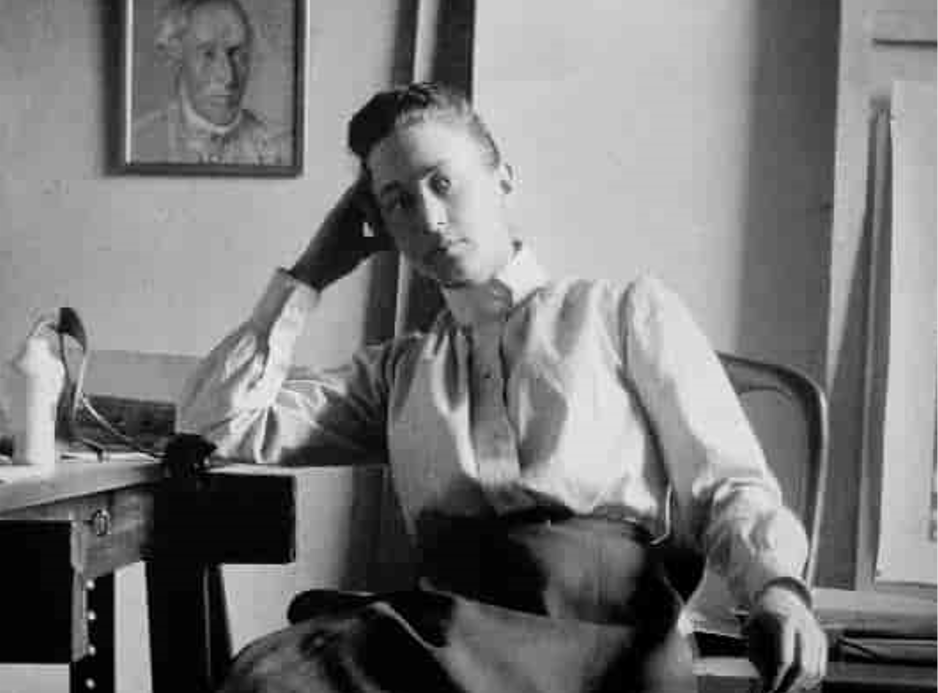Pablo Picasso’s Guernica: Behind the Scenes
Pablo Picasso’s Guernica confronts viewers with a monochromatic vision of war’s devastation. Created in response to the 1937 bombing of Guernica, the mural reflects the artist’s behind-the-scenes struggle to depict the chaos and horror of war without color, using shades of black, white, and gray.

Listen the Legacy of Guernica: War, Art, and Resilience
As you approach Pablo Picasso’s Guernica, the sheer scale of the mural demands your attention—its sprawling canvas pulls you into a world where chaos reigns, and anguish bleeds through every brushstroke. There are no vivid colors to soften the horror, only stark shades of black, white, and gray. The painting confronts you with twisted bodies, wide-eyed animals, and a mother’s silent scream as she clutches her lifeless child. Yet, in this vast scene of destruction, there are no explosions, no blood—only a profound, haunting stillness.
Guernica is not just a reflection of the bombing that decimated the town of Guernica; it’s a visual cry against the madness of war itself. Picasso, through his jagged figures and broken forms, captures a universal horror—the kind that transcends borders, politics, and time. This mural, created in response to an atrocity in 1937, continues to resonate because it captures something timeless: the fragility of life in the face of human violence.

The Process: A Race Against Time
The story behind Guernica begins in the spring of 1937. In late April of that year, the Basque town of Guernica was brutally bombed by German and Italian planes, supporting Francisco Franco’s fascist forces during the Spanish Civil War. News of the attack reached Picasso, shaking him to his core. He had already been commissioned by the Spanish Republican government to create a work for the upcoming Paris Exposition, but until that moment, he struggled to find inspiration.
Overcome by rage and grief, Picasso threw himself into his work. Time was of the essence—he had only weeks to complete a mural-sized painting that would confront the world with the horror that was tearing Spain apart. In his Paris studio, surrounded by sketches, canvases, and the sound of his own rapid brushstrokes, Picasso began painting what would become his most iconic work.
He applied layer upon layer of paint, using a technique that left portions of the canvas rough, almost raw, to amplify the sense of distress. The figures came to life slowly: a bull, a horse, a woman clutching her dead child, another trapped in the flames of a burning building. All were created with the artist’s bold lines, each brushstroke loaded with emotion. It wasn’t just the figures that mattered—it was the spaces between them, the empty, suffocating voids that echoed the silent cries of those who had lost everything.
Related Stories:


Challenges: A Mural Born in Conflict
As the painting took shape, so too did the challenges Picasso faced. His choice to depict the bombing in abstract terms—through broken, distorted forms—was met with skepticism. People wanted literal depictions of heroism, battle, or at least visible explosions. But Picasso refused. For him, the pain of war could only be captured in this fragmented, disjointed manner. To give the work a literal narrative would be to minimize its horror, to make it understandable. And war, as Guernica so powerfully suggests, is anything but understandable.
The Spanish government, dealing with internal and external conflict, struggled to support the controversial mural, yet Picasso remained steadfast. The challenge wasn’t just artistic—it was political. Franco’s supporters and fascist sympathizers condemned the work as a provocation, while some critics, uncomfortable with Picasso’s abstract approach, questioned the artist’s relevance.
Inspirations: Suffering on Canvas
Picasso’s inspirations for Guernica were both deeply personal and universal. The atrocities of the Spanish Civil War had ravaged his homeland, and he watched helplessly as his country tore itself apart. But Picasso’s painting wasn’t just a reflection of Spain’s suffering; it was a reflection of the broader human condition. The war in Spain was, to Picasso, a microcosm of the global tensions simmering in Europe, tensions that would soon explode into World War II.
Each figure in Guernica is symbolic. The horse, which writhes in agony at the center of the composition, embodies the terror and helplessness of the Spanish people. The bull, often interpreted as a symbol of Franco’s oppressive regime, stands eerily calm, as if observing the destruction it helped unleash. The mother, holding her dead child, is a haunting embodiment of grief—a grief that is not hers alone but belongs to everyone affected by war.
And then, there is the light. A single bulb, suspended from above, shines down on the chaos. It is cold, mechanical—its presence both illuminates and accuses. For some, this light represents the cruel detachment of modern warfare; for others, it is the last glimmer of hope amidst despair.
Guernica’s Enduring Cry
Today, Guernica remains one of the most powerful anti-war symbols in art history. The figures still scream in silence, and the monochromatic palette continues to drain the viewer’s energy, pulling them into the nightmare Picasso created. But the painting isn’t just a relic of the past—it speaks to the present, reminding us that, as long as there is war, there will be suffering.
As you stand before Guernica, you don’t just see a painting—you feel it. Picasso’s cry against war wasn’t just his own; it was a cry on behalf of humanity, one that continues to echo through the halls of museums and, more importantly, through our collective conscience.
Would you dare to face Guernica and confront the truths it forces upon you?
ART Walkway News






